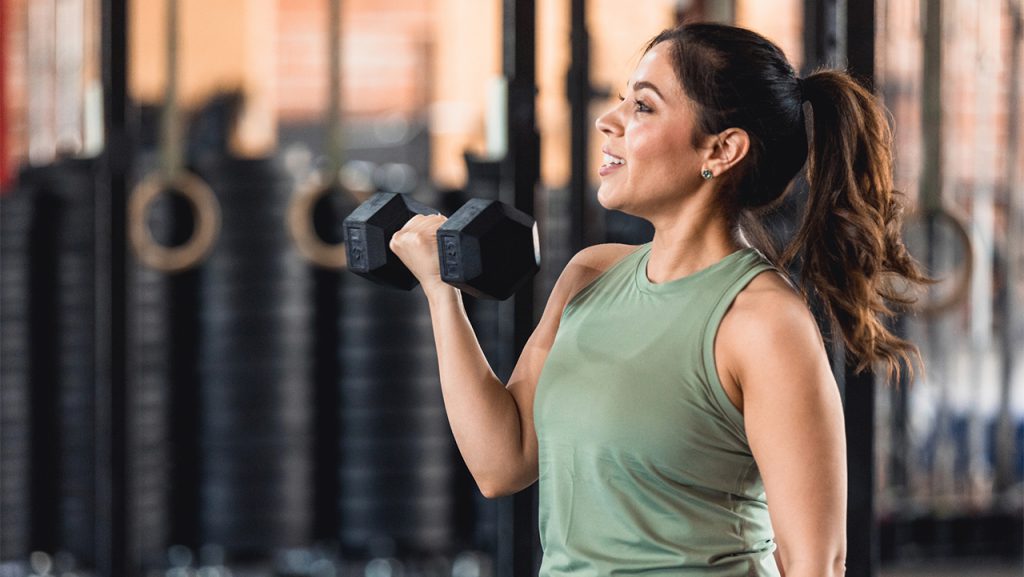Have you ever entertained the idea of weight training but hesitated because you didn’t want to “bulk up”? Weight training has multiple benefits for women, as it does for nearly all adults at any age and fitness level, including you. You don’t have to start with 40-pound weights. A beginner wright training program for women can ease you into strength training.
What Happens When Women Start Weight Training?
Strength training, also known as resistance training, builds bone and muscle for strength and stamina and helps flood your brain and body with endorphins so you can power through your day with energy and positivity.
If that weren’t enough to sell you on a strength training routine, it’s also instrumental in retaining muscle as you age and can help keep your weight in a normal range throughout your lifetime. Additionally, it can benefit flexibility and balance and reduce body fat.
One of the great things about strength training is its versatility.
- You can do it at a gym or in your own home.
- You can add strength training to your current fitness routine, doing sets of strengthening between intervals of moderate aerobic activity.
- You can use:
- Hand weights
- Barbell with plate weights
- Weight machines
- Heavy household objects, such as gallon jugs of liquid and cans of food
- You can forgo the weights altogether and instead do calisthenics or Pilates, using your own bodyweight to build strength. You can also use stretchy resistance bands.
How Many Times a Week Should Beginners Lift Weights or Strength Train?
According to the Centers for Disease Control and Prevention, beginners should lift weights or participate in other strength-building activities at least twice a week for each muscle group. The key is to rest your muscles for a minimum of 24 hours before repeating strength training for that muscle group.
While there’s no harm in working your upper and lower body on the same day, splitting your training days up by muscle groups allows you to work all your muscles without having to power through muscle soreness. Focusing on muscle groups is also a simpler approach for beginners — you build upper body muscles one day and focus on the lower body the next day. That could include a strength training schedule that looks like this:
- Mondays and Wednesdays – Upper body and core exercises that strengthen:
- Shoulders
- Arms
- Chest
- Abdomen
- Back
- Tuesdays and Thursdays – Lower body exercises that strengthen:
- Hips
- Thighs
- Knees
- Calves
- Ankles
If you need guidance, seek advice from an athletic trainer.
How Should Beginners Start Working Out?
Training with resistance bands is one of the easiest ways to start a strength-building program at home or in the gym. Beginners can do two to three sets of each exercise, eight to 12 repetitions (reps), targeting each muscle group. Here is an example from UC Berkeley of a resistance band workout featuring activities for each muscle group:
- Upper Body
- Bicep curl
- Overhead triceps extension
- One-arm row
- Core
- Plank
- Side plank
- Bird dog
- Lower Body
- Skater squats
- Woodchoppers
- Lunges
The goal is to tire your muscles by the last rep of each set. Beginners can add additional reps and use thicker bands over time to progressively build muscle and strength.
Injuries don’t have to keep you from pursuing better health through strength training. Sports medicine professionals are here to help you heal. Find a sports medicine provider at St. Elizabeth Physicians in Northern Kentucky and Southeastern Indiana.

